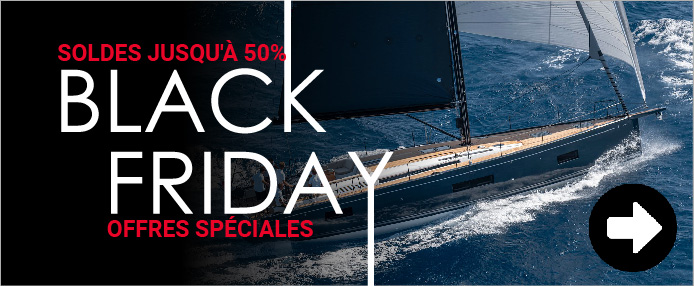Marine Antenna
Marine antennas are essential for maintaining reliable communication and navigation systems at sea. Whether for VHF, AIS, AM/FM or GPS connectivity, selecting the correct antenna design and material directly affects signal range and stability in harsh marine environments. Upffront offers a wide range of marine antennas from trusted brands such as 1852 and Scout, engineered for performance, durability and optimal signal transmission across sailboats and powerboats. Read more...
Understanding Marine Antennas
Marine antennas are specifically designed to provide clear, consistent signal transmission and reception across long distances in marine environments, where salt, UV exposure and mechanical vibration pose constant challenges. Compared to land-based systems, marine communication requires antennas that can maintain high gain and low signal loss while withstanding constant motion and environmental stress. Key applications include VHF communication, AIS transponders, GPS navigation, AM/FM radio, and increasingly, 4G/5G connectivity for onboard internet systems.
The performance of a marine antenna depends on several interrelated factors—frequency range, gain, polarisation, antenna length, and installation height. Understanding these characteristics ensures compatibility with onboard electronics and maximises operational efficiency.
Key Types of Marine Antennas
The most common and critical communication system on any vessel, VHF antennas operate between 156–162 MHz and are essential for ship-to-ship, ship-to-shore, and emergency communication. Typically mounted on the mast or radar arch, these antennas are designed for omnidirectional transmission, enabling 360° signal coverage. High-quality models from Scout and 1852 use fibreglass or stainless steel whips to balance flexibility, signal integrity, and corrosion resistance.
2. AIS Antennas
Automatic Identification System (AIS) antennas operate on similar frequencies to VHF but are optimised for data transmission between vessels and monitoring stations. While many VHF antennas can be dual-purposed, a dedicated AIS antenna offers improved impedance matching and reduced interference—key for accurate real-time tracking and collision avoidance systems.
3. AM/FM Marine Antennas
Designed for entertainment systems, AM/FM antennas prioritise broad frequency coverage and minimal static interference. These antennas typically use corrosion-resistant materials and compact whip designs suitable for cabin roof or stern rail mounting.
4. GPS and GNSS Antennas
Precision navigation requires a reliable GPS or GNSS antenna capable of capturing signals from multiple satellite constellations. These antennas are engineered with low-noise amplifiers (LNA) and weatherproof housings to maintain high positional accuracy, even in offshore environments.
5. 4G/5G and WiFi Marine Antennas
Modern yachts increasingly rely on internet connectivity for navigation, weather data, and onboard entertainment. 4G/5G marine antennas and WiFi extenders enhance broadband reception and stability at sea, supporting routers and onboard networks. Some Scout models feature MIMO (Multiple Input Multiple Output) technology to boost signal throughput and resilience.
Scout Marine Antennas
Key Features and Technical Considerations
• Antenna Gain (dB)
Gain determines how effectively an antenna converts input power into radio waves. Higher gain (6–9 dB) produces a more focused horizontal beam, suitable for stable motor yachts, while lower gain (3 dB) offers a broader signal pattern ideal for sailing yachts that heel significantly.
• Construction Materials
Quality marine antennas must resist UV radiation, salt corrosion, and mechanical stress. Fibreglass models provide excellent stiffness and signal performance for offshore vessels, while stainless steel whips offer superior flexibility and impact resistance. Brands like Scout use high-density polyurethane coatings to ensure long-term durability.
• Cable and Connector Quality
Signal performance is often limited by poor cabling. Low-loss coaxial cables such as RG-213 or RG-8X minimise attenuation, particularly on long runs from masthead to transceiver. Waterproof connectors (e.g., PL-259, BNC) are essential for maintaining impedance matching and preventing corrosion.
• Mounting Systems
The choice of mount—ratchet, deck, rail or masthead—affects both signal reach and mechanical stability. Stainless steel ratchet mounts with adjustable angles allow for optimal antenna positioning and easy folding for storage or low-clearance passage.
• Impedance Matching (50 Ohms)
Marine communication systems typically operate on a 50-ohm impedance standard. Proper matching between the antenna, cable, and transceiver ensures maximum power transfer and minimal reflection (SWR).
• Waterproofing and IP Rating
Look for antennas with IP67 or higher ratings to ensure complete protection against immersion and saltwater ingress. Sealed housings and UV-stabilised materials contribute to longevity and consistent performance.
Marine Antennas Featured Brands: 1852 and Scout
Italian manufacturer Scout is recognised for high-performance marine communication products that blend precision engineering with advanced materials. Their VHF, 4G, and WiFi marine antennas incorporate innovative polyurethane coatings and internal brass elements for enhanced signal transmission and weather resistance. Scout’s range also includes MIMO-enabled 4G/5G antennas and dual-band designs, providing high data throughput for modern marine networks.
Known for practical, cost-effective solutions, 1852 offers a range of VHF, AM/FM, and AIS marine antennas suitable for both leisure and commercial vessels. Their fibreglass whips feature high-quality brass or stainless elements to deliver reliable performance with minimal maintenance. Compact mounting systems and pre-terminated coaxial cables simplify installation for boat owners seeking dependable functionality without complexity.
Selecting the Right Marine Antenna
Choosing the correct marine antenna depends on vessel type, communication requirements, and installation environment:
• Sailing yachts benefit from lightweight, flexible marine antennas with moderate gain (3 dB) to maintain omnidirectional coverage during heeling.
• Motor yachts and powerboats can utilise higher-gain marine antennas for greater range and directional performance.
• Offshore cruisers should prioritise durability, corrosion resistance, and minimal signal loss across long cable runs.
Combining different antenna types—such as separate units for VHF, AIS, and GPS—helps prevent signal interference and improves redundancy across systems.
Summary on marine antennas
High-quality marine antennas are the foundation of safe, reliable communication and navigation at sea. Whether you’re upgrading a VHF setup or integrating next-generation 5G connectivity, the right antenna ensures strong, consistent signals in all conditions. At Upffront, we supply a curated selection of 1852 and Scout marine antennas—precision-engineered for the demanding environments faced by today’s sailing and motor yachts.

To install this Web App in your iPhone/iPad press
![]() and then Add to Home Screen.
and then Add to Home Screen.




